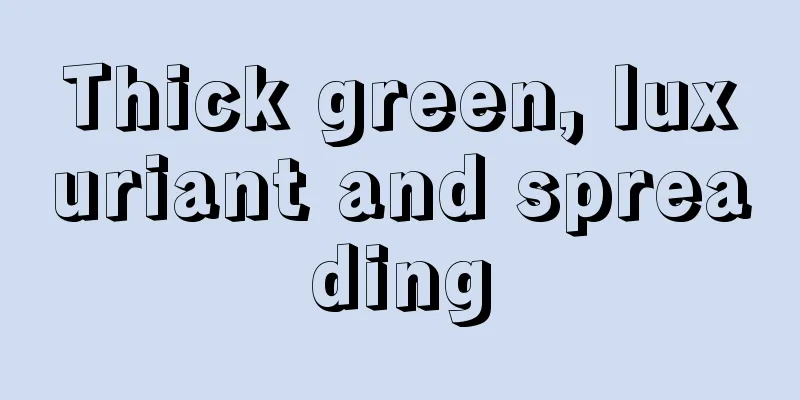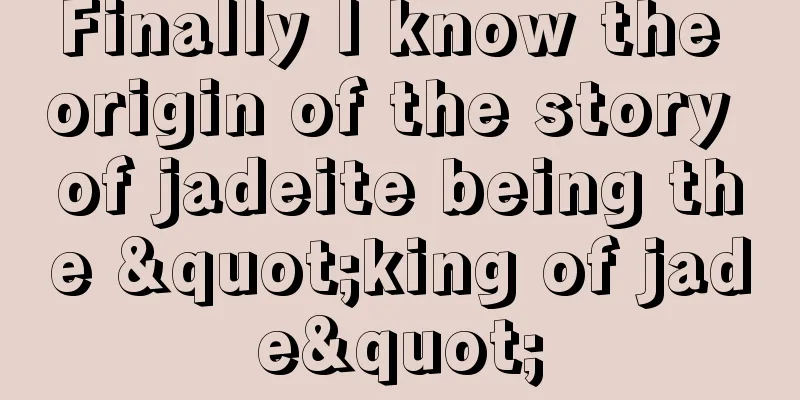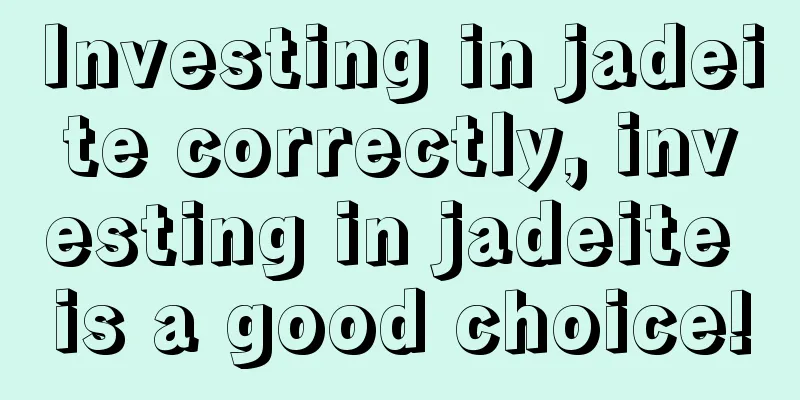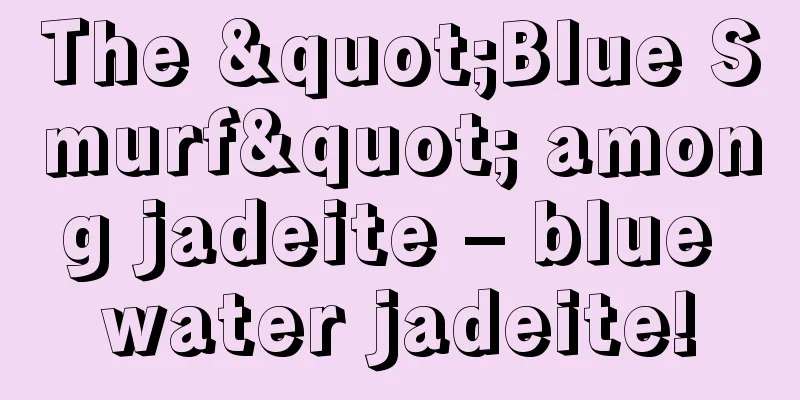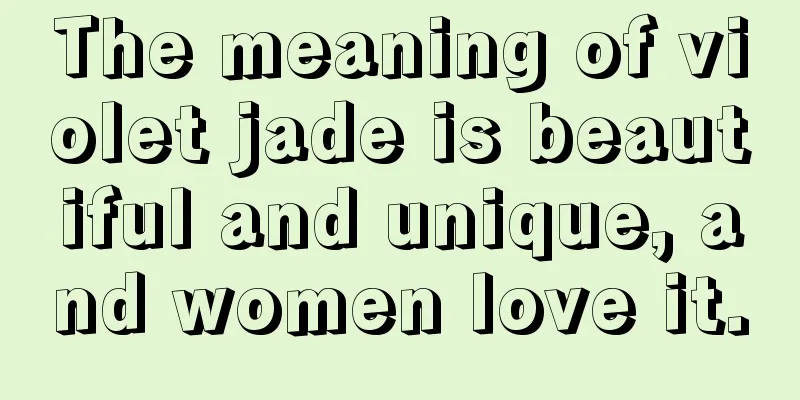How to correctly identify violet jadeite?
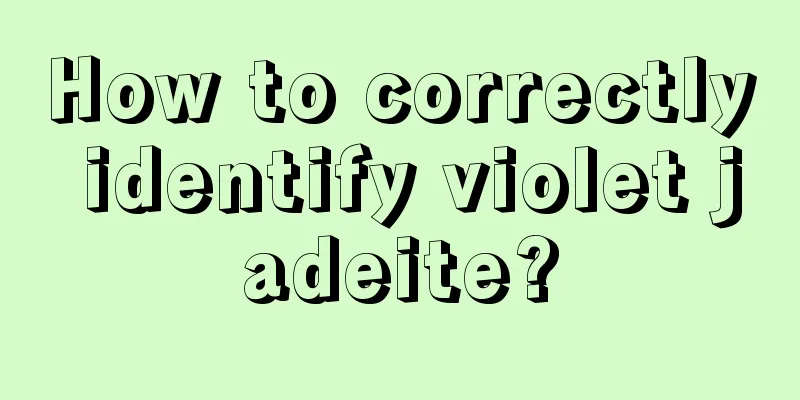
|
How to correctly identify violet jadeite? We gamble on jadeite raw stones in bulk in Myanmar's jadeite market all year round. Let me share with you my experience over the years. First, we need to understand what violet jadeite is! We all know that jade has many colors. In addition to green, many consumers also like violet jade. Jade is generally more valuable when it is green, but in the colorful jade family, in addition to green, there is another color that is also deeply loved by everyone, that is violet. This is what we call purple jadeite. Violet jade can be regarded as a relatively fine variety in the jade family! In recent years, as more and more people have fallen in love with violet jade, its price has also risen sharply! Speaking of violet jadeite, I would like to mention it here as well, because purple jadeite is a general term after all. If it is classified from a professional perspective, there are five types of purple according to the saturation and color intensity, namely: royal purple, red purple, blue purple, pink purple, and violet. Purple jadeite, called violet jadeite, is also known as: purple spring, spring color. Purple represents nobility and elegance. The Forbidden City is also called the "Purple Forbidden City". There is also a folk saying that when Laozi came out of seclusion, purple air came from the east. Next, let’s talk about how to correctly recognize violet jadeite, because in the domestic jadeite market, high- and medium-grade green jadeite is often counterfeited. It is what we usually call B-grade and C-grade jadeite. Generally speaking, we rarely see purple jadeite, and some people think that violet jadeite is a counterfeit product. Here we need to know that this concept of judgment is incorrect. We cannot judge the authenticity of purple jadeite based on the intensity and depth of the purple color. People have always been unclear about the reason why jadeite gets its purple color. Because under the chemical composition analysis of electron probe, purple jade is relatively pure, and except for a small amount of iron, it contains almost no manganese. In the past, gemologist Dr. Rossman proposed that the color change of purple jade was caused by the valence jump between divalent iron and trivalent iron. However, some scholars have failed to obtain reliable data after repeated experiments. After the 1990s, more precise element measurements were used to measure purple jadeite, and an interesting phenomenon was discovered. Purple jadeite never contains chromium, but only a small amount of iron, a very small amount of manganese, and a small amount of metal elements such as germanium and titanium, which result in different purple tones. Due to the special reasons for its formation, purple is generally lighter and is clearer when observed under natural light. Violet jade is a type of jade with a purple color. There is a saying in the industry that "nine out of ten are spring jades are wood", which means that violet jade basically has no water quality and is opaque. Ten purples and nine out of ten are beans. Generally, the violets are large and the water quality is difficult to meet the requirements. But it is also very difficult to find ones with fine grains, old water quality and true color. This special purple is generally lighter, like the purple of violets, hence the name. Among yellow jadeite and green jadeite, spring is the most precious. Spring color refers to the purple color in jadeite, commonly known as violet. Violet includes basically the entire purple series from light purple to beige purple to dark purple, among which light purple is the largest. Because jade has the characteristic of changing light under different light and angles, and this characteristic is more obvious in violet. The violet color of jadeite will mostly fade under natural light, which is called "dying in the light" in the jargon. Moreover, there are not many violets with good water content. As the saying in the industry goes, "nine out of ten are spring and nine are wood," this is what it means. Just as violets die in the light, nine out of ten spring trees are planted with water. Therefore, the price of violets with good color and watery texture is correspondingly more expensive.
|
<<: Is it true that the more complex the jade carving is, the more valuable it is?
Recommend
Such bold and avant-garde jade carvings are difficult to understand at first glance, but they are endless when you savor them carefully!
Jade is superior to stone because of its texture,...
A million-dollar full green jadeite material, custom-carved with a green lion jade seal, so domineering
For jade carving art creation, finding ways to pr...
There are so many shapes of jade ring faces, which one is the most suitable?
As an indispensable part of jade jewelry, jade ri...
Why is violet called "spring"?
When it comes to jade, the first thing that comes...
What kind of jade is suitable for young people? The following are definitely what you want
Jade has always been associated with many labels:...
It's obvious that the certificate is fake! The easiest way to identify jadeite
Whenever we talk about buying jadeite, Teng Pu Pa...
How to choose an ice jade bracelet? What should you pay attention to when choosing an ice jade bracelet?
The ice jade bracelet not only has extremely good...
The jade carver skillfully carved an antique bottle with a chain, paying tribute to the traditional jade carving craft
Artistic creation is about a kind of sentiment, w...
Is it difficult to identify jadeite? Experts talk about how to identify A-grade and B-grade jadeite
Jade identification has always been a concern for...
Jade Appreciation | These Jade Flowers and Plants Are Very Well Planted
It was probably because I read the line in Tang X...
Beautiful to the point of intoxication - Clear Water Jade and Blue Water Jade are pure and clear
Strictly speaking, Qingshui jade is not a type of...
The ice jadeite sheet material allows jade carving to be brought to the extreme, and I am so satisfied with the works!
This is a piece of ice-type jadeite. It is not ve...
Can a certificate prove that the jade is genuine? Master the identification skills and grasp the last straw
Nowadays, many consumers know that they should as...
The most practical method to identify the authenticity of jadeite. No need to worry about taking medicine anymore!
1. Observation and identification method Traditio...
How to identify the authenticity of jadeite, you must know
Jadeite is also known as Burmese jade. It was onc...
